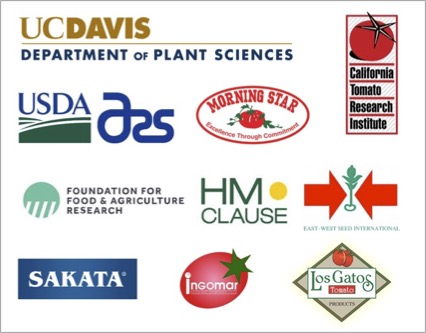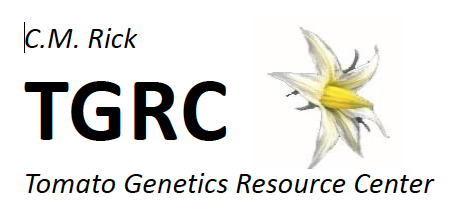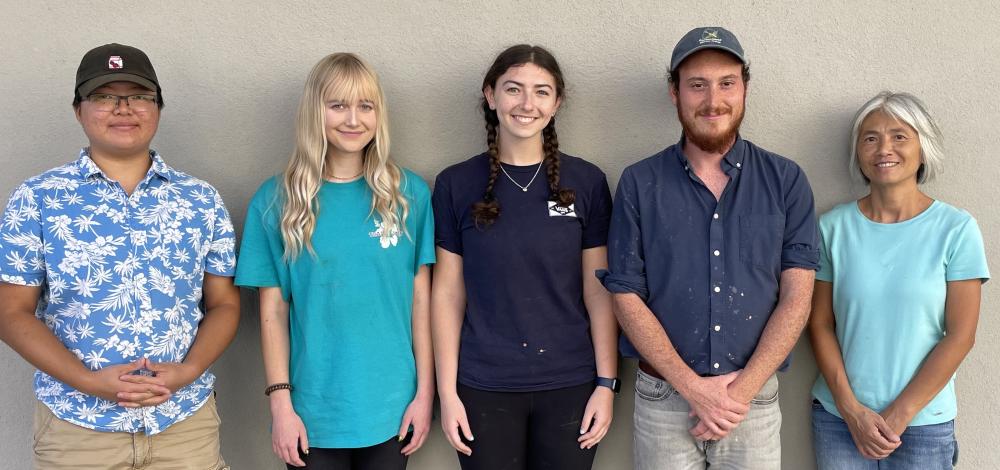
Background and History
The C.M. Rick Tomato Genetics Resource Center (TGRC) is a genebank of tomato wild relatives, monogenic mutants and miscellaneous genetic stocks. The wild species group includes representatives of each of the 13 species in the ‘tomato clade’ (Solanum section Lycopersicon), as well as the related nightshades S. lycopersicoides, S. sitiens, S. juglandifolium and S. ochranthum. The monogenic mutants include spontaneous and induced mutations affecting various aspects of plant growth and development, as well as disease resistance gene stocks. The miscellaneous genetic stocks include multiple marker combination stocks; cytogenenetic stocks such as trisomics, tetraploids, and translocations; vintage cultivars and landraces; prebred stocks such as introgression lines, backcross inbred lines, recombinant inbred lines, and monosomic alien addition lines.
The TGRC was founded by the late Dr. Charles M. Rick, who collected a large share of its wild species accessions, with help from many people, especially his wife Martha Rick, as well as Miguel Holle, Jon Fobes, Eduardo Vallejos, Alf Kastdalen, Miguel Castro, Andres Contreras, Rudi Thomann, and others. Additional wild populations were donated by Fernando Nuez and associates. Rick also characterized and mapped a large number of the mutant stocks, many of which originated from the irradiation experiments of Hans Stubbe. Maarten Koornneef donated a number of hormonal and photomorphogenic mutants. The cytogenetic stocks were isolated by Rick, Gurdev Khush, and others. Dani Zamir and his associates synthesized a large number of prebred lines (ILs, BILs) representing the S. pennellii genome in cultivated tomato. Steve Tanksley's group created a library of S. habrochaites ILs, Majid Foolad's group developed S. lycopersicum x S. pimpinellifolium RILs. Additional accessions of various types were donated by many different researchers from institutions around the world.
Germplasm Activities
Acquisition. To fill gaps in the collection or acquire new types of germplasm resources, we assimilate new accessions of high value items when appropriate. New stocks are either donated by external researchers, developed through in-house research, or collected in the native region (although getting permission for new collections is now difficult).
Stock Maintenance. Seed samples of most accessions are stored locally under short-term (4C, for active use) or long-term (-20C) storage conditions. Backup samples are deposited with the Plant and Animal Genetic Resources Preservation unit at Fort Collins, Colorado. Germination tests are performed regularly to identify stocks in need of regeneration (<80% germination). Plants are grown for seed multiplication in the greenhouse or field, and are observed for key features, including morphological markers, cytogenetic changes, genetic diversity, mating systems, and other diagnostic traits.
Seed Distribution. Seed samples are distributed gratis to bona-fide researchers and breeders worldwide. Each year, we receive ca. 300 requests, in response to which we send 6,000-7,000 individual seed samples representing 2,000 or more different accessions.
Utilization. TGRC germplasm is used for a wide variety of basic and applied research. Our annual literature search uncovers 100+ new publications (journal articles, theses, patents, abstracts) mentioning use of TGRC stocks. Among the topics emphasized are: the search for disease resistances and other biotic stresses (insects, nematodes, parasitic plants), greater tolerance to abiotic stresses (drought, heat, cold, salinity), and/or improved horticultural and fruit characteristics. Topics of a more fundamental nature include a wide variety of studies in physiology and development (e.g. leaf development, fruit ripening, self-incompatibility, etc), genetics (e.g. gene mapping, QTLs studies, wide hybridization, etc), and genomics (e.g. transcriptomics, comparative genomics, etc).
Documentation. Our database includes passport information on all accessions, detailed collection notes for wild species, a list of the known mutants of tomato, and a library of digital images of tomato stocks. Lists of wild species, monogenic mutants, and miscellaneous genetic stocks are available for download.
For more information, see our most recent Annual Progress Report, available below.
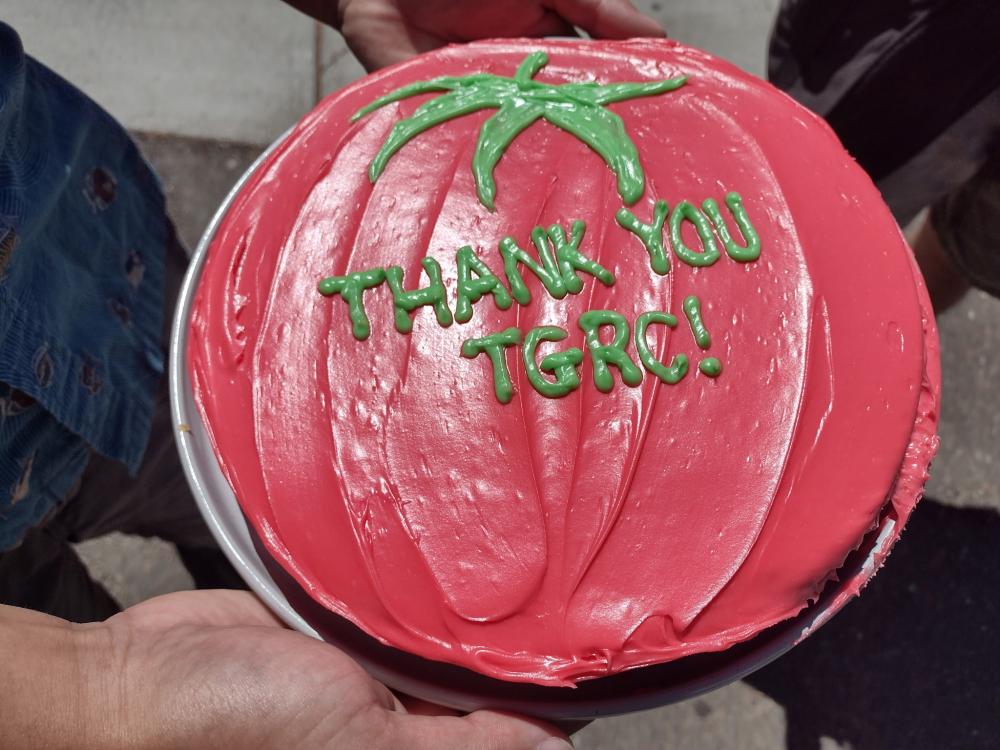
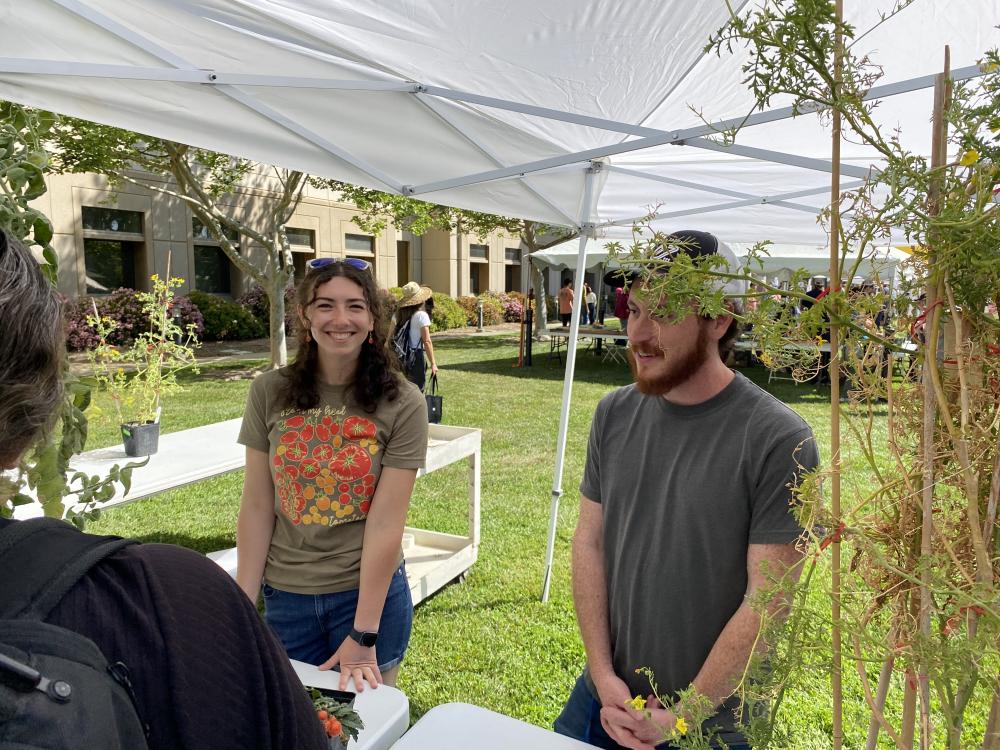

Funding
The TGRC is a unit of the Department of Plant Sciences, University of California at Davis, and is affiliated with the National Plant Germplasm System (NPGS). Financial support is provided by UC-Davis Plant Sciences Dept., USDA-ARS, the California Tomato Research Institute, the Morning Star Packing Co., the TGRC endowment fund, and the Foundation for Food and Agricultural Research.
To find out how to support the TGRC, click here.
We are grateful for support from these and other agencies:
